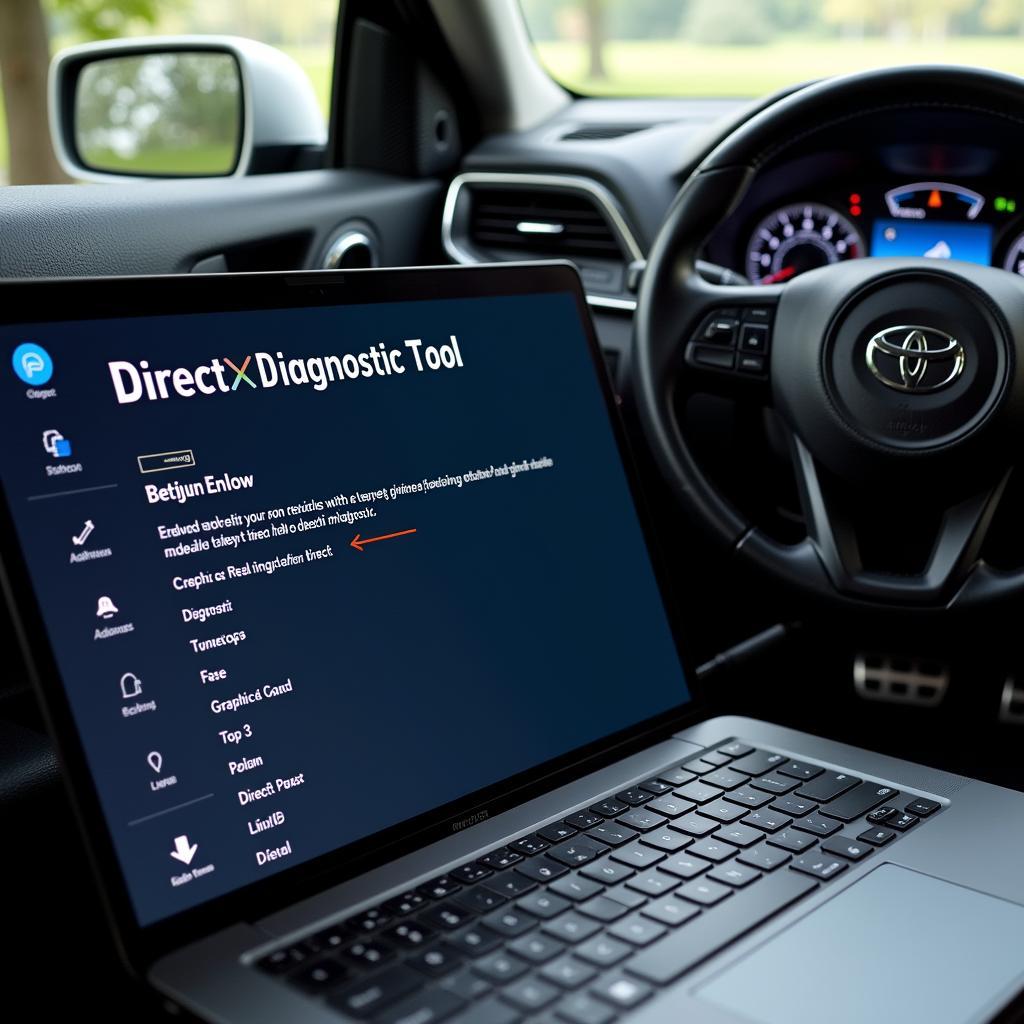Active Directory (AD) replication is the lifeblood of any Windows-based network. When it falters, so does productivity. Understanding how to effectively use an Ad Replication Diagnostics Tool can be the difference between a quick fix and hours of frustrating troubleshooting. This guide delves into the intricacies of AD replication diagnostics, providing you with the knowledge and resources to keep your network running smoothly.
AD replication ensures that changes made to one domain controller are propagated across the entire network. This process is crucial for maintaining consistency and availability of resources. However, various factors can disrupt this delicate balance, leading to errors, slowdowns, and even outages. That’s where AD replication diagnostic tools come into play. They provide insights into the replication process, identify bottlenecks, and pinpoint the root cause of issues. You can learn more about diagnostic tools, such as the [dfsrdiag.exe diagnostic tool](https://scantoolus.com/dfsrdiag-exe-diagnostic-tool/).
Why are AD Replication Diagnostics Important?
A healthy AD environment is essential for smooth business operations. Without a reliable AD replication process, users might experience login issues, access problems, and synchronization errors. Diagnostic tools empower administrators and technicians to proactively identify and address replication problems before they escalate.
Common AD Replication Problems
Several factors can disrupt AD replication. These include network connectivity issues, DNS misconfigurations, time synchronization errors, and problems with the domain controllers themselves. Understanding these potential problems is the first step towards effective diagnostics.
- Network Connectivity: A faulty network connection between domain controllers can prevent replication from occurring.
- DNS Errors: Incorrect DNS settings can prevent domain controllers from locating each other, hindering replication.
- Time Synchronization: Domain controllers need to have their clocks synchronized to ensure accurate replication.
- Domain Controller Issues: Issues with the domain controllers themselves, such as hardware failures or software corruption, can also disrupt replication.
Choosing the Right AD Replication Diagnostics Tool
There are a variety of tools available for diagnosing AD replication problems, each with its own strengths and weaknesses. Some popular options include built-in command-line tools like repadmin, dcdiag, and graphical tools like Microsoft’s Active Directory Users and Computers. Selecting the appropriate tool depends on the specific problem you’re facing and your level of technical expertise. For instance, the [dfsrdiag.exe diagnostic tool](https://scantoolus.com/dfsrdiag-exe-diagnostic-tool/) offers specific functionalities that might be useful in certain situations.
Understanding Repadmin
Repadmin is a powerful command-line tool that provides detailed information about the replication status between domain controllers. It allows you to check replication topology, identify replication errors, and force replication if necessary.
Utilizing DCDiag
DCDiag is another valuable command-line tool that analyzes the health of domain controllers and identifies potential problems, including replication issues.
How to Use an AD Replication Diagnostics Tool: A Step-by-Step Guide
- Identify the Affected Domain Controller: Determine which domain controller is experiencing replication problems. This might involve checking event logs or monitoring performance.
- Choose the Right Tool: Select the appropriate diagnostic tool based on the suspected cause of the problem.
- Run the Diagnostic Tool: Execute the chosen tool and analyze the output. Look for error messages, warnings, or any unusual values.
- Interpret the Results: Understand the meaning of the output and identify the root cause of the replication problem.
- Implement the Solution: Apply the necessary fixes to resolve the replication issue. This might involve fixing network connectivity, correcting DNS settings, or restarting the affected domain controller.
Advanced AD Replication Diagnostics Techniques
For more complex replication problems, advanced diagnostic techniques might be necessary. These could involve analyzing network traffic, examining database consistency, or using specialized monitoring tools. The [dfsrdiag.exe diagnostic tool](https://scantoolus.com/dfsrdiag-exe-diagnostic-tool/) is another option that can provide advanced diagnostic capabilities.
Network Monitoring for AD Replication
Monitoring network traffic between domain controllers can help identify connectivity issues or performance bottlenecks that might be affecting replication.
Conclusion
Mastering AD replication diagnostics is crucial for maintaining a healthy and productive network environment. By understanding the tools and techniques available, and by taking a proactive approach to troubleshooting, you can minimize downtime and ensure the smooth operation of your AD infrastructure. A robust AD replication diagnostic tool can be your greatest ally in this endeavor. If you require further assistance or have any questions, feel free to connect with ScanToolUS at +1 (641) 206-8880 or visit our office at 1615 S Laramie Ave, Cicero, IL 60804, USA. We’re here to help you keep your network running smoothly.
 AD Replication Diagnostics Tools and Techniques
AD Replication Diagnostics Tools and Techniques
Don’t let AD replication problems bring your network to a standstill. Invest the time to learn and utilize these powerful diagnostic tools, and keep your network humming along. The [dfsrdiag.exe diagnostic tool](https://scantoolus.com/dfsrdiag-exe-diagnostic-tool/) can be a valuable asset in your troubleshooting arsenal.

